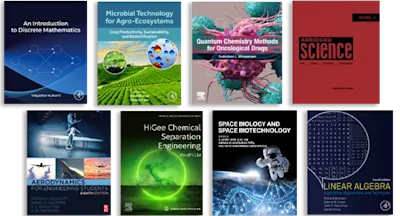
Wind Turbine Wakes
Physics, Modelling and Mitigation Strategies
- 1st Edition - May 1, 2026
- Latest edition
- Author: Xiaolei Yang
- Language: English
- Paperback ISBN:9 7 8 - 0 - 4 4 3 - 3 1 5 7 0 - 1
- eBook ISBN:9 7 8 - 0 - 4 4 3 - 3 1 5 7 1 - 8
Wind Turbine Wakes: Physics, Modelling and Mitigation Strategies offers a detailed introduction to wind turbine wake dynamics, computational models, and wake mitigation strate… Read more
Purchase options

Wind Turbine Wakes: Physics, Modelling and Mitigation Strategies offers a detailed introduction to wind turbine wake dynamics, computational models, and wake mitigation strategies, bridging the gap between research and industry by showcasing the latest developments in the field with insights and case studies. This book is structured in four parts, offering in-depth coverage of the science of wind turbine wakes, mid-fidelity and high-fidelity numerical models, engineering models, and wake mitigation strategies. While the book delves into theoretical aspects, it also emphasizes the practical applications of various computational models for wind turbine wakes. Step-by-step tutorials for setting up the case, selection of model parameters, and result analysis will be included in the book to enable readers to employ and test various models in their work. A volume in the Elsevier Wind Energy Engineering Series, this is a valuable resource for all those with an interest in wind turbine design and layout, wind farm development and optimization, wind resource assessment, and wind power plant operation, including researchers, students, faculty, engineers, R&D, and industry practitioners.
- Provides a systematic review of recent advances in the understanding of wind turbine dynamics and wakes in wind energy applications
- Considers key impacts of wakes on power production and fatigue loads of wind turbines
- Discusses different wake mitigation strategies and future directions for developing wind power plants
- Emphasizes practical applications of various computational models for wind turbine wakes, including case studies in onshore and offshore wind
Researchers, students, and faculty in wind energy engineering, mechanical engineering, civil engineering, and renewable energy
Part 1 Wind turbine wake dynamics
1. A general picture of wind turbine wakes
2. Flow statistics of wind turbine wakes
3. Stability and flow structures of wind turbine wakes
Part 2 Mid-fidelity and high-fidelity methods
4. Reynolds-Averaged Navier-Stokes method
5. Large-eddy simulation
6. Coupling LES with the mesoscale weather model
Part 3 Engineering models
7. Models for time-averaged wakes
8. Dynamic wake models
Part 4 Wake mitigation strategies
9. Optimization of wind farm layouts to mitigate wake impacts
10. Active wake mitigation strategies
1. A general picture of wind turbine wakes
2. Flow statistics of wind turbine wakes
3. Stability and flow structures of wind turbine wakes
Part 2 Mid-fidelity and high-fidelity methods
4. Reynolds-Averaged Navier-Stokes method
5. Large-eddy simulation
6. Coupling LES with the mesoscale weather model
Part 3 Engineering models
7. Models for time-averaged wakes
8. Dynamic wake models
Part 4 Wake mitigation strategies
9. Optimization of wind farm layouts to mitigate wake impacts
10. Active wake mitigation strategies
- Edition: 1
- Latest edition
- Published: May 1, 2026
- Language: English
XY
Xiaolei Yang
Xiaolei Yang is a full professor at the Institute of Mechanics, Chinese Academy of Sciences. He started his research on wind turbine wakes in 2010 and has experience investigating the dynamics of wind turbine wakes, developing high-fidelity computational methods for wind turbine wakes, and constructing engineering models for fast predictions of wind turbine wakes. Prof. Yang has published 70 journal papers and 11 refereed conference papers, with over 2,600 citations. He obtained his Ph.D. in fluid mechanics from the University of the Chinese Academy of Sciences (2010) and subsequently worked as a Research Associate at Saint Anthony Falls Laboratory, University of Minnesota, and Senior Research Scientist and Research Assistant Professor at the State University of New York at Stony Brook, before joining the Chinese Academy of Sciences in 2019. He currently serves as Executive Associate Editor-in-Chief for Theoretical and Applied Mechanics Letters and editorial board member for Energies and Wind.
Affiliations and expertise
Full Professor, Institute of Mechanics, Chinese Academy of Sciences, China